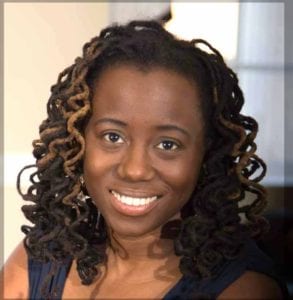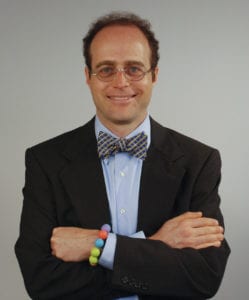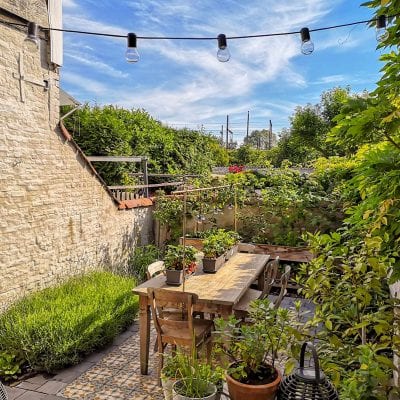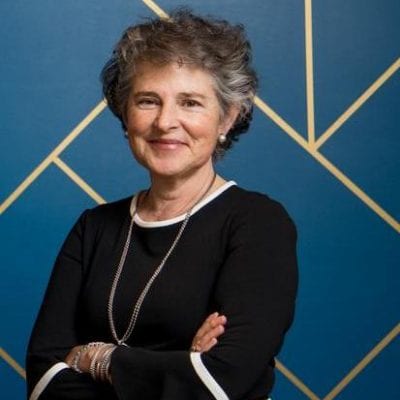Buildable Backyards: Expanding Housing Options While Maximizing Land Resources with Accessory Dwelling Units
Creating Homes and Opportunities
Nonprofit developers and affordable housing providers are getting involved with shared-equity housing models to advocate for accessory dwelling units in their projects.
The Buildable Backyards Real Estate Summit, a 2-day virtual conference looking at lending, underwriting, appraising, and marketing accessory dwelling units, was born to fill an information vacuum.
 Sherry Taylor, asset manager of the Durham (North Carolina) Community Land Trustees (DCLT), could not find any gathering where nonprofit agencies, particularly community land trusts, shared information about accessory dwelling units as an affordable housing option. With an innovation grant in hand, DCLT had launched CLTplusOne, a pilot program to figure out how to pair an ADU with a land trust home.
Sherry Taylor, asset manager of the Durham (North Carolina) Community Land Trustees (DCLT), could not find any gathering where nonprofit agencies, particularly community land trusts, shared information about accessory dwelling units as an affordable housing option. With an innovation grant in hand, DCLT had launched CLTplusOne, a pilot program to figure out how to pair an ADU with a land trust home.

“I figured, if I’m doing all this research and contacting all these nonprofits to find out how they’re doing this, wouldn’t it be great to organize something where many more people could access this information?”
– Sherry Taylor
“I figured, if I’m doing all this research and contacting all these nonprofits to find out how they’re doing this, wouldn’t it be great to organize something where many more people could access this information?” Taylor said. “Buildable Backyards is something where our organization and our board is going to learn, but also it’s kind of a labor of love.”
“For my other nonprofit friends, I want ADUs to be utilized as affordable housing. It’s not the only solution of course, but it will help. And I think this summit will make it easier for people to start to think about developing their own programs or convincing policymakers, those on planning commissions, to rethink this, and say, ‘Yes in my backyard’ instead of ‘No in my backyard.'”
The conference will focus on providing information for nonprofit affordable housing providers and others involved in real estate transactions, whether they are working with ADUs now or not. The conference will look not just at design and construction, but also much of the front-end work that has to be done before design and construction can even begin – lending and increasing awareness of ADUs as an option, for example. For many, the information will help them prepare for the future, when ADUs are allowed in their jurisdictions or they are ready to move forward with a program.
Shared Equity Housing

“We’re going to look at ways ADUs can be part of not just less-expensive housing, but regulated affordable housing,” said Eli Spevak, the owner of Orange Splot LLC, a Portland, Oregon-based developer of small communities of homes. Spevak also helped to form Portland’s community land trust, now called Proud Ground. “I think it’s an exciting conversation to get started on.”
In particular, DCLT is looking at using a shared-equity housing model to put accessory dwelling units on community land trust parcels. Though shared equity can take different forms, for community land trusts, organizations that own land and see it as a community resource, it typically happens that the land trust owns the land and sells the structure on it. The buyer pays a below-market-average price for the home. The equity sharing part comes in when the homeowner decides to sell. The homeowner will get a portion of the appreciation of the home’s value and pass along the rest to the next homebuyer.
According to DCLT, CLTplusOne innovates the traditional community land trust model of homeownership by adding an ADU. The program pairs a permanently affordable land trust home with an affordable rental on the same lot.
But it’s an uncommon practice for community land trusts. Taylor noted that she contacted the national network for community land trusts, and of 240 organizations, only three were doing it. Buildable Backyards is an effort to spread the knowledge and the opportunity, share resources and help other land trusts maximize their land to provide affordable housing, add housing units in established neighborhoods, and increase the purchasing power of low- and moderate-income homebuyers, while helping them build wealth.

“There’s a really strong feeling here and elsewhere that there should be less-expensive housing choices in every neighborhood because every neighborhood needs teachers and retail and people of all means to live there.”
– Eli Spevak
Equity of a different sort is also inherent in making more affordable housing available. Spevak noted that ADUs can help neighborhoods emerge from the inequity inherent in some zoning laws that only allow one large single-family home on a lot.
“You can’t build anything on a lot unless it’s a certain size, and then when you can build it, you can only build one house on there, which is a recipe for exclusion, really,” he said. “It’s a systematic way in our zoning codes to keep lower-income people out. There’s a really strong feeling here and elsewhere that there should be less-expensive housing choices in every neighborhood because every neighborhood needs teachers and retail and people of all means to live there.”

Supporting the Summit
The summit’s Diamond Sponsor, AARP got involved in ADUs back in 2000, working with the American Planning Association to craft a model local ordinance to help bring ADUs to more cities and counties. This experience, and the fact that housing has been a part of AARP’s focus since its founding, made being a major sponsor of Buildable Backyards seem like a natural fit.
AARP wants to raise the profile of ADUs as a housing solution, said Shannon Guzman, senior policy advisor with AARP’s Public Policy Institute.
“I just think that the Buildable Backyards Summit is just a great way to showcase all of the good examples that are happening around the country of people working on ADUs and a good way for AARP just to help, encourage and support the work that’s being done and showcase some of the work that AARP is doing in that space as well,” Guzman said.
And AARP offers quite a bit to anyone, retired or not, looking to enjoy the benefit of an ADU. AARP is so invested in ADUs because they touch the three pillars of age-friendly housing that the organization supports:
- Housing options, offering a variety of housing to meet different people’s needs;
- Housing affordability; and
- Housing accessibility, to allow people with mobility issues to navigate their homes.

“We’re seeing interest growing around ADUs as this alternative for smaller-type housing that can fit within a community, as people’s needs change and as their circumstances change”
– Shannon Guzman
They can also help keep communities together, Guzman said, allowing people to stay in their neighborhoods as they get older and may experience job loss or medical situations that would otherwise force them to relocate.
“We’re seeing interest growing around ADUs as this alternative for smaller-type housing that can fit within a community, as people’s needs change and as their circumstances change,” Guzman said. “For example, people may need to care for mom and dad immediately. And this provides a way to build something at a lower cost and to be able to provide extra living space within a household.”
AARP offers a number of free resources for those seeking information on ADUs, including a video library that includes videos that showcase how certain families are thinking about ADUs or have used an ADU to meet their particular needs.
Buildable Backyards will take place June 22-23, 2021. More information and tickets are available at www.buildablebackyards.com.
Colleen Valles is an award-winning writer who helps organizations tell their sustainability stories. After nearly a decade spent as a reporter, which included covering environmental issues for the Associated Press, she turned her research and writing skills toward communications in complex industries including housing and land use, water, transportation, energy and education. Colleen has written a variety of content for publications, public and private organizations, executives and elected officials, always with an eye toward making complicated issues engaging and relatable. Her work combines the two things she's passionate about: writing and making the world a better place.
- Colleen Valleshttps://adumagazine.com/author/colleen-valles/
- Colleen Valleshttps://adumagazine.com/author/colleen-valles/
- Colleen Valleshttps://adumagazine.com/author/colleen-valles/
- Colleen Valleshttps://adumagazine.com/author/colleen-valles/
- ADU Magazinehttps://adumagazine.com/author/adu-magazine/
- ADU Magazinehttps://adumagazine.com/author/adu-magazine/
- ADU Magazinehttps://adumagazine.com/author/adu-magazine/
- ADU Magazinehttps://adumagazine.com/author/adu-magazine/








